
|

|
Conduct Feller Buncher Operations
Unit FPIHAR3207B:
Conduct Feller Buncher Operations
 Forest Operations > Conduct Feller Buncher Operations > Feller Buncher Operations
Forest Operations > Conduct Feller Buncher Operations > Feller Buncher Operations
Risk Management Approach to Feller buncher operations
SOME AREAS FOR HAZARD IDENTIFICATION |
SOME FACTORS TO CONSIDER IN ASSESSING RISK |
EXAMPLES OF CONTROL MEASURES |
| Working Environment and conditions | ||
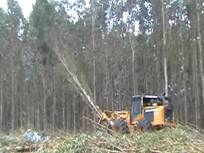 |
Wind speed and direction | Safe work procedures covering conditions when it is safe or unsafe to continue |
| Identification and assessment of dangerous trees (e.g. hung up branches, unreliable fall direction, etc.) | Identify unsuitable trees for mechanical felling prior to operation and on ongoing basis, and determine course of action | |
| Methods of felling to suit conditions | Appropriate training and supervision | |
| Ability of feller buncher to operate safely on the terrain | Operation according to instructions from manufacturer and supplier | |
| Slope and terrain variation forsafe entry and exit of operator from cabin |
Appropriate training Visual check of ground before exiting cabin Use of handrails/hand holds Use three points of contact | |
| Visibility and lighting | Adequate lighting for all work locations at all hours of work | |
| Workers and plant in vicinity of Feller Buncher | ||
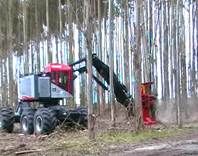 |
Possibility of tree falling in work area of other crews | Establishment of exclusion zones appropriate to tree density and terrain |
| Work area close to access routes | Safety induction for visitors use of warning signs | |
| Coordination of activities with ground workers and with other plant operators | Systems and methods for oral, visual and/or radio Communication High visibility clothing | |
| Communication with other workers | ||
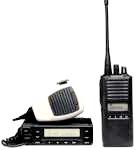 |
Coordination of ground workers with machine operators | Effective use of equipment |
| Methods of communication between ground workers | Methods of communication including radio, oral and visual Safe work procedures appropriate training | |
| Workers in isolated areas | Agreed alternative communication measures and time frames. | |
| Levels of noise affecting communication | Faulty exhaust system or poorly insulated cabin. | |
| Terrain | Hills, gullies and dense vegetation. | |
| Possible interference with electronic communication | Engine interference, power lines. | |
| Plant and equipment | ||
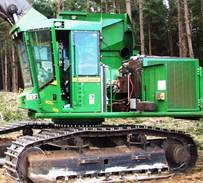 |
Competence of operators | Appropriate training and supervision |
| Safety during operation, includingsafety devices, condition of equipment, etc. | Fitted ROPS & FOPS, peratorprotective guards, seat restraints (e.g. set belts, harness, etc.) Inspection and maintenance suitable hand rails/hand holds | |
| Operational capability of equipment | Follow manufacturer/supplier information, appropriate training | |
| Exposure to hazardous substances | Follow recommended procedures in Material Safety Data Sheets | |
| Static electricity dischargeduring fuelling | Follow recommended procedures in Material Safety Data Sheets | |
| Operator safety | ||
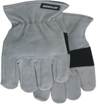 |
Slips trips and falls | Suitable footwear Use of handrails/hand holds Use of seat belts/restraints 3 points of contact |
| Environmental hazards e.g. poor visibility and noise | Wearing of PPE including hearing protection and high visibility clothing |
|
| Unrestrained objects in cabin | Ensuring all objects in the cabin are securely stored or fastened | |
| Operator fitness / fatigue | Rotation of tasks Rest breaks Physical exercise e.g. |
|
| Emergency procedures and Evacuation | ||
 |
Methods of communication | Safe work procedures
Appropriate training including first aid training Consultation with providers of |
| Access to and egress from the site | ||
| Isolation of workers | ||
| Time frames for medical assistance | ||

